Worldbuilding Fauna I |Worldbuilding 12|
- Raelyn Teague

- Nov 25, 2022
- 15 min read
Welcome back to another worldbuilding blog. If you’re in need of a monster to harass your space explorers, a unique mount for your knight, or a quirky familiar for your wizard, then you’re in the right place! Today we’re discussing how to make your own fantasy or sci-fi animal.
For the last few Noveljutsu episodes, we’ve discussed how to create new plants to grow in your world. If you haven’t read those posts yet, I would recommend you check them out either before or after reading this, because many of the same things you need to consider about your plants will apply to your animal species too.
The main focus for this post will be on creating wild or domesticated animal species for your world, not so much on designing your own intelligent, sentient humanoid species. However, if you’re in need of a new humanoid species to inhabit your world, today’s post might help with that too.
But before we get into the discussion, let’s quickly go through the usual disclaimers:
This will be an overview of how to create animal species that would fit into an Earth-like world. It is not the be all/end all but meant to inspire you to ask the right questions when designing animals for your novel. If you’re not making an Earth-like world, consider how the tips for today’s discussion might apply differently to your planet. How would your animal species adapt to a planet unlike Earth? As always, take any inspiration from this discussion and do further research if necessary.
With that out of the way, let’s dive in! This first post is going to focus a little bit more on the physical aspects of your animal more so than behavioural traits, but before you consider either one of those, you might first want to spend some time thinking about what will be your animal’s…
TONE AND PURPOSE
Before getting too far into developing new animal species, you’ll want to take the tone of your novel into consideration as well as the purpose you want your animal species to fulfill.
How seriously does your novel take itself? If your novel is a gritty, hard sci-fi, you’ll definitely want to put in the extra effort to make sure your made-up animal species feel plausible and like they fit into the ecosystems in which you’ve placed them. Any occupations, economies, or plot twists involving this animal may make your readers lose interest in your book if you haven’t done the work to make sure your animal species make sense. However, novels that have a more whimsical or humorous tone can get away much more easily with nonsensical animal life. Take Avatar: The Last Airbender, for example. Many of those animal species don’t make sense from an evolutionary standpoint, but they aren’t meant to. Instead, the animals are meant to be cute or funny, and they fulfill exactly the role they’re meant to.
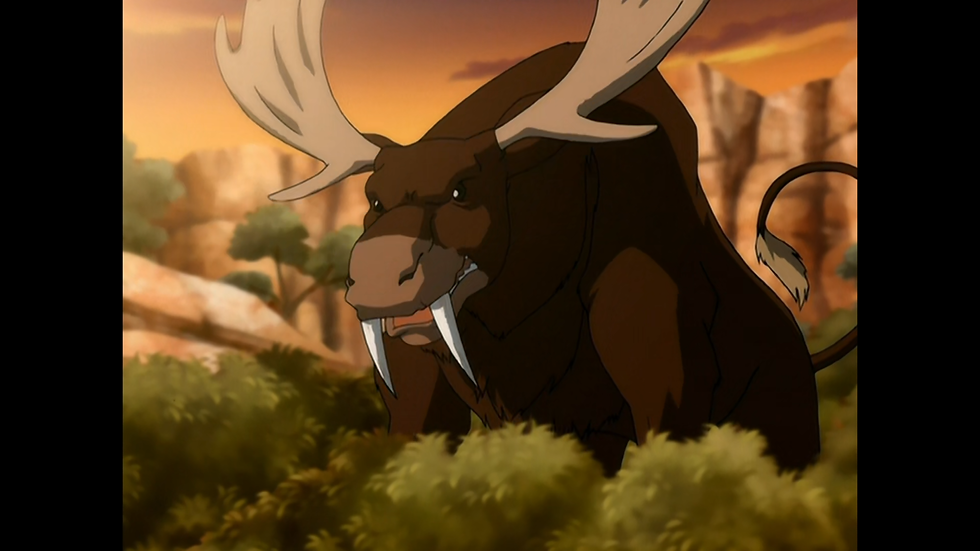
Speaking of roles, what role does your animal play in your story? I’m not talking about whether it’s a prey animal or a beast of burden—we’ll talk about that kind thing later. What I mean is what role does the animal fulfil from a narrative perspective? What emotional effect do you want the creature to have on your reader? Do you want them to be filled with awe, “aww,” or “AHHH”? How you want your readers to respond to your animals should impact how you go about designing them.
If your animal is meant to frighten your readers, maybe you’ll choose to leave it somewhat ambiguous, focusing on an unsettling visual description and a few terrifying behavioural characteristics while leaving the rest up to the darker parts of the reader’s imagination. Sometimes not knowing is far scarier than knowing.
However, if you have plot twists dependent on readers knowing how, say, the social hierarchy of your animal functions, then you might want to make sure that social hierarchy is interesting enough for readers to want to take note.
Take a good look at the tone you intend for your novel and the effect you want your animal species to have on your readers, because that will inform a lot of how you handle every other aspect of that animal’s design.

DIET
Once you know enough about the narrative purpose of your animal to start working on its actual biology and behaviour, a good place to start is taking a look at your animal’s diet. We already touched on the food chain in my first post on designing your own plants. As discussed there, unless you’re designing some kind of plant/animal hybrid, animals are consumers and can’t produce their own food. They must get their nutritional requirements from elsewhere.
Consider whether your animal is an herbivore, eating only plants; a carnivore, eating only meat; or an omnivore that eats both. Whatever their diet, your animal will need to be adapted to make the most of their main food source.
Depending on what kind of plants they eat and how much they need to eat to keep their bodies functioning, your herbivore might need to have multiple stomachs; long, flexible tongues to strip leaves from branches; and jaws and teeth that allow for a side-to-side grinding motion. If it doesn’t have teeth, does it swallow rocks, an acidic plant, or something else that helps it digest its food?
Carnivores might need digestive systems that move raw meat through them quickly, teeth to tear flesh from bone, or jaws that unhinge to allow them to swallow a meal whole.
Omnivores will, of course, be adapted to getting nourishment from both plant and animal sources. Maybe that long tongue of theirs works just as well for collecting burrowing insects as it does for pulling leaves off the bean vines in your main character’s vegetable garden.
You’ll also want to consider whether your animal is prey, a predator, or a scavenger and what the staple plants or animals of their diet are, because they’ll need to be built not only to digest those things, but also to seek them out and, in the case of predators, capture and kill them.
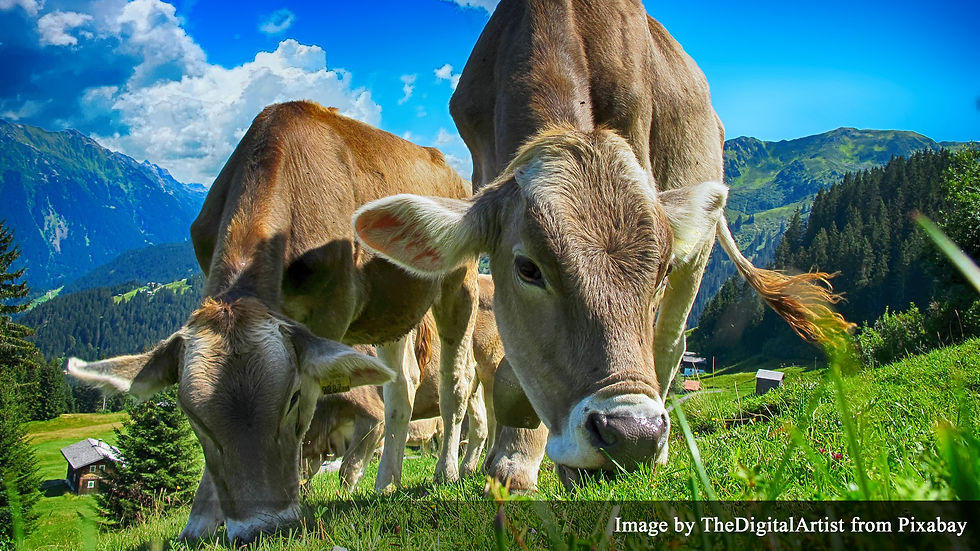
How does your animal seek out suitable nutrition? By sight or smell? Echolocation? Telepathy? Does your herbivore have a nose that draws them to their favourite fruit when it’s at its most nutritious level of ripeness? Can your predator pick up a certain frequency of sound their prey makes but that most people and critters can’t hear? Perhaps your scavenger has a special kind of vision that allows them to know when roadkill is safe and when it’s become disease-ridden. Or, if a predatory animal is especially dependent on a migratory food source, such as bison, do they follow the herd? Or do they go into hibernation to wait until the herd’s return?
How does your animal capture its meal? If a plant has spines, then whatever eats that plant is going to need a way around that plant’s defense. Maybe the inside of the animal’s mouth is too hard to be pricked, and it crushes the fleshy parts and spits out the spines. If a prey animal is a fast runner, whatever hunts it is either going to need to be just as fast or else smart enough to not have to be fast. Maybe it hunts in packs, sets traps, or is camouflaged so it can creep close without being noticed. Whatever animal you want to create for your world, take a good look at what they eat, because that will give you ideas for how your animal needs to adapt to obtain the nutrition it needs to survive.
Not only can you think about what your animal eats but also how much of it they need to eat. Small animals might not need much food unless they’re constantly burning through their energy. Large animals, however, are going to need a lot of calories. That means they’re probably either constantly eating—such as your grazing animals like deer—or they’ll spend a lot of time resting or sleeping to conserve energy—such as your lazy lions.
This might be especially important for you to think about if you’re planning on any of your invented animals being a mount or a pack animal. There are a lot of fantasy stories out there that forget a horse can’t be galloped from sunup to sundown, be given one bag of feed, and then have the horse back at full stamina come morning. Horses are giant vegetarians. While they can go several hours between meals, they still need a lot of calories to support all that muscle and galloping around. So if your main character plans to ride the same horse for a multiple-day journey, they’re not going to be riding all day long, and they’re going to need to take both their own and their animal’s nutritional needs into account.
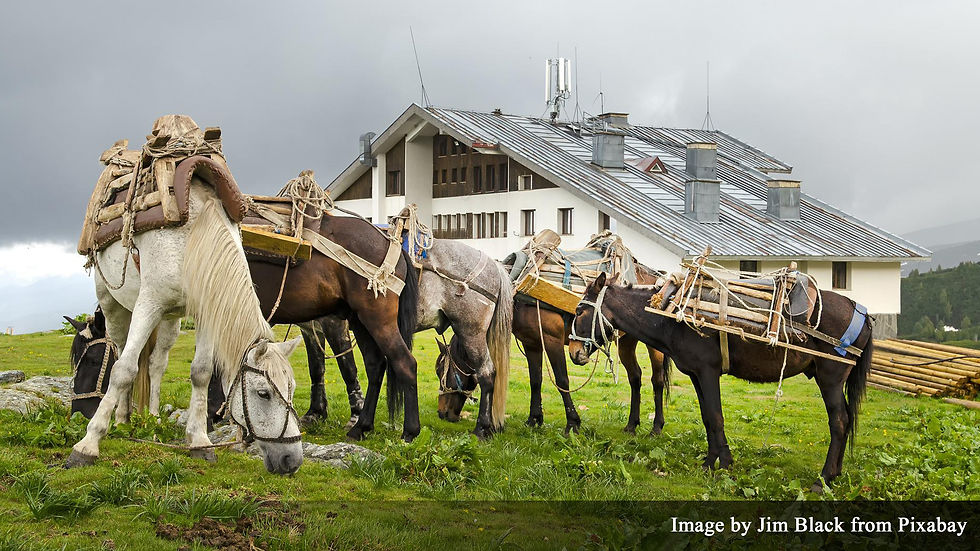
As a final note on your animal’s diet, you’ll want to think about how low or high it sits on the food chain in relation to other animals. The lower it is on the food chain, the more likely this animal will need to have larger populations to keep the species from going extinct as animals higher up the food chain prey on them. Likewise, the higher up the food chain, the more likely that animal will be fewer in number. They might have fewer offspring and longer gestation periods. They might be aggressively territorial and keep out others of their species. So keep in mind where your animals sit on the food chain, because if you inhabit your entire world with apex predators, they’re either going to be cannibalistic, or they’re going to run out of food.
HABITAT
We already discussed adaptation when it comes to your animal obtaining food, but how will your animal species adapt to its natural habitat? Consider what kind of climate your animal lives in. How do they regulate their body temperature? Are they cold- or warm-blooded? Can they protect themselves from too much sun or from poor weather? Is drinking water easy for them to find, and if not, how have they adapted to survive?
Think about where your animal lives. Do they live underground? If so, they might need claws to burrow. Do they live in the water? Then they’ll probably want gills and fins or some other way that helps them breathe and navigate through the waters. If your animal lives in the treetops, do they have wings, opposable thumbs, or flexible tails so they can move around up there? Is your animal hoofed? Or does it have sticky, padded toes that help it climb up the side of a wall?
Does their habitat affect the availability of food? Does your animal live in a place where food is plenty, and therefore it has little need to hone hunting or scavenging skills? Or is food scarce and difficult to capture? Does your animal needs to be able to travel long distances to find their next meal or survive days or even weeks between meals? Do they live in a place where the seasons can mean food is plenty for certain months and all but gone in others? Does your animal store away food for seasons of scarcity? Does it hibernate? Does it migrate to other climes where it will continue to have a good food supply?
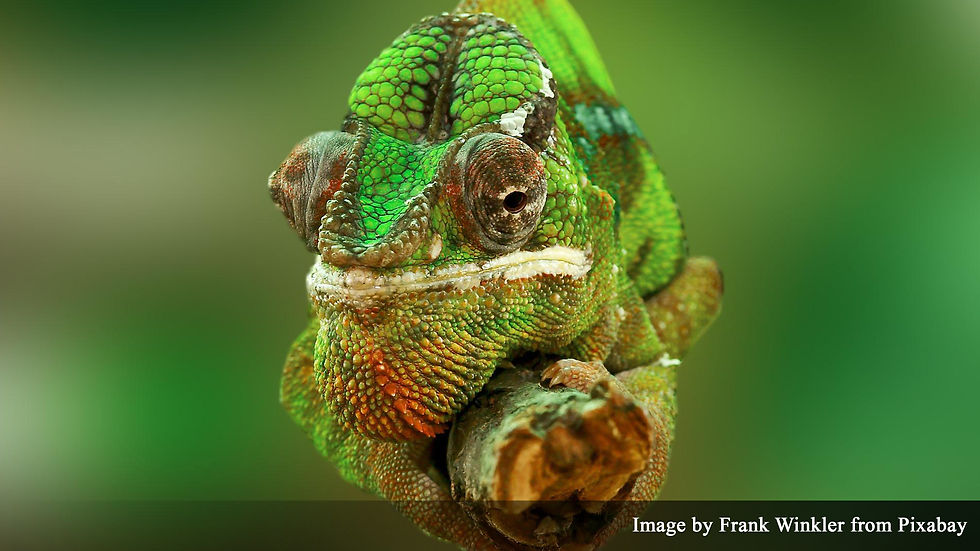
DEFENSE
Now that you’ve thought about what your animal eats, you might want to think about how your animal defends itself from things that eat it. How does your animal adapt to protect itself from predators?
Some animals adapt to avoid detection of predators in the first place. They might develop colouring to blend into the background or to disguise themselves to look like a more dangerous species. Maybe an animal on your world disguises its smell by constantly rolling in mud. Or, if you have predators that track their prey by sound, maybe your prey animal has developed a call that mimics the roar of the nastiest predator in town, warning away lesser predators in the area.
Other animal species might not be able to avoid predators altogether and instead will adapt to escape once they’ve been spotted. Many prey species on Earth have eyes to the sides of their head, allowing them to keep better watch on their surroundings. Some social species have sentinels that keep watch for danger and warn the rest of the group at the first sign of trouble. Other animal species have defensive operations for when that trouble is spotted, such as forming protective circles around the young, or a momma bird trying to lure a predator away from her nest. Many prey animals might be good climbers, high jumpers, or fast runners to give them a chance at getting away. Still other animals may have a form of armour or other deterrent, like the spines on a porcupine or the nasty spray of a skunk. Some may develop a mutualistic relationship with another animal, providing a benefit to an animal that can act as their protector. For a real-world example of this, the oxpecker eats parasites that live on the skin of big animals like rhinos, getting a meal while ridding the rhinos of pests, but the oxpeckers, which have better eyesight than rhinos, will also warn them of approaching danger.

But even animals that aren’t preyed upon might need to develop a way to defend themselves. What happens when two predatory species are competing for a limited food source? Do they normally live in harmony when that food source is plenty, simply ignoring each other? What happens if humans start messing with that ecosystem and hunting the same food source, decreasing its population? Do those predators start attacking each other? Do they start attacking humans? What defense do these species have against each other? Does the way one species adapted to hunt its food source give it an advantage over the other predator, or does it make it more vulnerable?
How do aggressive animal species adapt to defend themselves against their own kind? Do they have antlers to attack each other and defend themselves? Do they develop aggressive social behaviours in an attempt to intimidate the other before things escalate as far as actual fighting—such as beating their chest, growling, or raising on their hind legs? Or do they prefer to space out their territories to avoid each other altogether? Do fights among two aggressors of the same species always end in death, or do they end once one submits to the other or runs away?
Think about the ways your animal will need to defend itself from predators and aggressors, because that will influence your animals anatomy and behaviour.

BIOLOGICAL CYCLE
What does your animal’s cycle of life look like? Unless your animal is born from magic or some other metaphysical force that spits it out in adult form, chances are your animal is going to go through a few life stages. On Earth, animals all go through the same stages of life—birth, growth, reproduction, and death—but what each of those stages is like can vary widely between species.
Think of how your animal is born and consider how closely your animal does or doesn’t conform to Earth mammals, reptiles, amphibians, birds, and so on. For mammals, a live birth can be a traumatic experience. It can also be very dangerous—not only can the birth itself be potentially fatal, the laborious process can leave mother and child alike exhausted and vulnerable to predators. Yet for other animals, the mother might not even be around for the birth at all, having abandoned her eggs after laying them.
How frequently are animals of your species born and in what numbers? Are they born one by one or in litters of three, seven, or two hundred? What’s the survival rate like for your animal species? In that litter of two hundred, how many of them will see maturity?
Will babies of your animal species be born only once a year during a certain season? Or can they be born any time of the year? What are the survival odds for babies born in the spring? The winter? A dry season? Monsoon season? Are babies born a certain time of year more likely to develop certain traits?
If your animal species has male, female, or other sexes, you might want to think about what decides whether a fetus will be born one sex over another. Are X and Y chromosomes involved? Or, to go back to those seasons, perhaps offspring born in the spring are always female and those born in the fall are always male, while those born in summer or winter might be something else entirely. Maybe your world operates like The Sims and what the mother eats can influence the sex of their offspring. Can the sex of your species change over time or if it experiences a certain stimulus?
Next, think of how your animal grows from the day of its birth until it reaches maturity. What changes does it experience from when it was first born? The larval stage of an insect will probably look completely different from the adults of the species. Mammalian species, on the other hand, may be born already looking much like their parents, just smaller and ganglier. Or babies might be born hairless and develop fur as they age. As your animal matures, what physical, behavioural, or dietary changes occur?
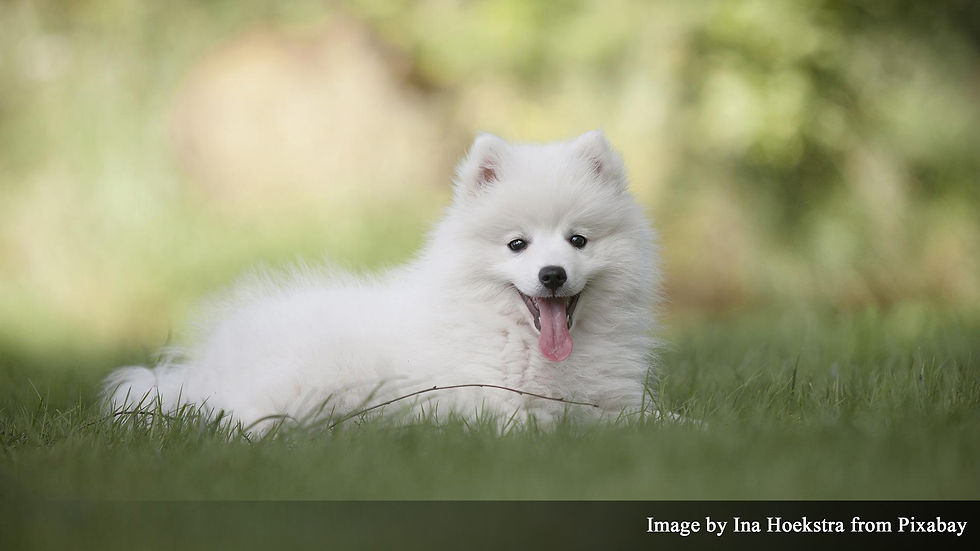
How does your animal species survive its youth? How independent is it upon birth? Does it depend on its mother for everything from food, to warmth, movement, hygiene, and safety? Does its mother, father, or both remain with it and care for it? Is it abandoned immediately after or even before its birth? Do parents kill or eat their own offspring?
How long does the growing stage last for your animal? Days, months, years? What marks your animal as an adult? Does it look outwardly different from its youth, or are the changes internal? Again, if your animal species has different sexes, is there an easy way to tell the adult sexes apart? Maybe the sexes are so different in appearance no one could mistake them for another, or maybe the only noticeable difference is so subtle only an expert would know the sex by sight.
How does reproduction work for your species? Just as the birthing process for a parent can be an arduous experience or no not a huge deal depending on what species it is, the same can go for the act of fertilization as well. For some animal species, the mating season comes rarely, but for others, the opportunity to produce offspring happens so often it’s routine. Think of domestic chickens. An egg won’t be fertilized unless a hen mated with a rooster beforehand, but they might lay an egg every day. Wild chickens might instead lay an egg every week.
For some animal species, they’re so strongly compelled to mate they can barely do anything else once mating season arrives, and other species, like pandas, may be on the verge of extinction because of how little interest they have in reproducing. Sometimes mating is traumatic and forced upon one party, and in other cases mating only occurs if a female is successfully wooed. Some species mate for life, and other species eat the male after sex. You do you.
Once your animal is pregnant, an egg has been fertilized, or whatever other form the fetus of your species takes has materialized, how long does gestation last? You might also want to consider how long adults of the species will be capable of having offspring. Is it only a short period of their lives, or can they produce offspring almost up until death?
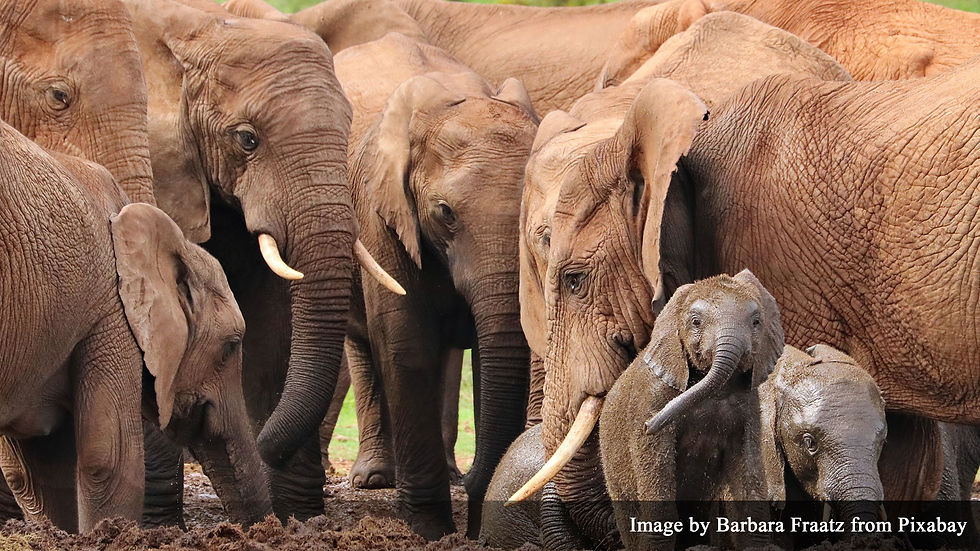
Speaking of, how does your animal species experience death? Do many of your species survive long enough to die of old age? Do they have a long decline before dying of old age or does it happen quickly? Do their senses weaken, or maybe even sharpen? Will they sense their death coming? Will they go off to die alone, or will they stay with a social group? How do others in their social group respond to the elderly among them, to a death? Some animals on Earth appear to mourn the dead. Perhaps the most famous example is elephants, who have been known to return to visit the bones of dead family members, but many other animal species have shown evidence of grieving for the dead. The more social the species, the more likely they are to mourn their dead.
Apart from taking a look at what your animal species’ life stages might look like, you’ll want to consider how long the average individual lives as a whole. Remember that an animal with a long lifespan and few natural enemies is less likely to need to produce large litters or have more than one litter in a year. If they do have a long lifespan, few things that kill it, and large litters, they’re going to disrupt and overtake entire ecosystems. But maybe that’s exactly the kind of conflict you’re looking for in your story.
ANATOMY
I’ve already hinted at this in our discussion, but while you’re considering what your animal eats, where it lives, and what its biological cycle is like, you can think of what kind of anatomy it needs to fit in for your plans for that creature. An animal will need an anatomy adapted that allows it to seek out, eat, and digest whatever makes up its diet. A prey animal that needs to be able to outrun predators will need the legs, muscles, lung power, and stamina to be able to do that. An animal that literally butts heads with others from its species, is going to have a skeletal structure evolved to take and deliver those kinds of hits.
This means if you know you want your animal species to have six tails, batwings, or fire-proof scales, the Earthen rules of evolution say that there must be a reason your creature evolved that anatomy. If you’ve got a specific bit of anatomy you want your critter to have, you might want to spend time thinking about exactly why your creature would have evolved that way, or, if magic is a part of your world, how the interference of magic might have redirected evolution.
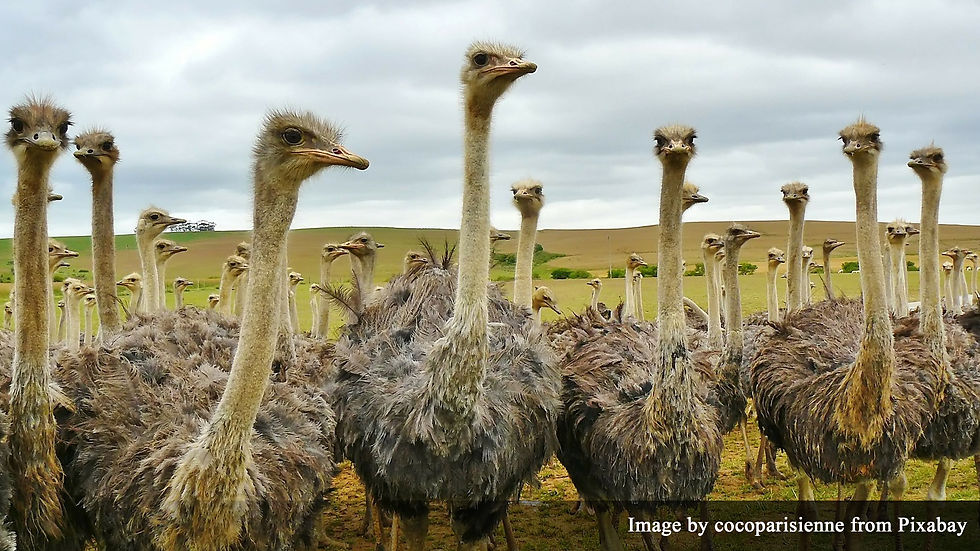
However, evolution takes a long time. Perhaps you have creatures that are still adapting to an environment that, in the grand scheme of things, is still new to them. Maybe they’re on the verge of extinction because a new kind of predator they aren’t equipped to protect themselves against has moved into the area. Or, on a related note, maybe your creature is evolved for conditions that no longer exist. Maybe you have a creature that used to fly but no longer needs to. If so, they might still have wings, but ones that are slowly evolving away and are no longer capable of flight. Or, maybe most are born without wings but the occasional one still has them. What do humans in your world think of those animals that still have that obsolete anatomy? Are they despised or considered valuable? Would the people in your world seek to breed animals specifically for that trait? Would they organize hunts, either to rid the local wildlife of a loathsome trait or to glorify a hunter that could collect such a rare trophy?
At every stage of developing your made-up creature, think about how each characteristic they have might affect another, and how those traits might evolve or devolve that creature’s anatomical structure.
So that’s it for the basics of your animal’s physical traits and needs, but there’s still more to discuss when it comes to designing animals to inhabit your world, so this post is going to have a part two coming out as soon as I can get it done. I hope you’ll stick around for it.
Did you find any of the questions I raised in this post helpful or surprising? Are there other questions you ask yourself about the physical qualities of animals in your world as you’re designing them? Do you have a favourite made-up animal from fiction? Me? As cool as dragons or as majestic as unicorns are, I really love Avatar: The Last Airbender’s turtle ducks. Even though I suspect the developers of the show didn’t spend oodles of their time worrying about making the habitat, diet, and social structure of the turtle duck feel scientifically plausible, they did make it adorable, which was really all it needed to be. I am a simple woman. I see cute, and I love it.
That’s it for this post. If you found any of the questions I raised in this discussion helpful, be sure to come back for the second part to learn about how to develop your animal’s behavioural traits.




Comments